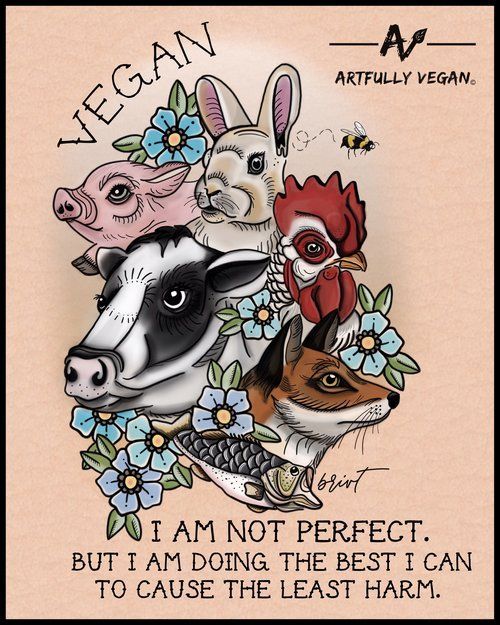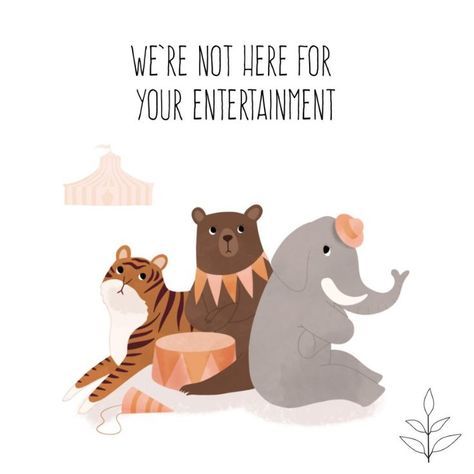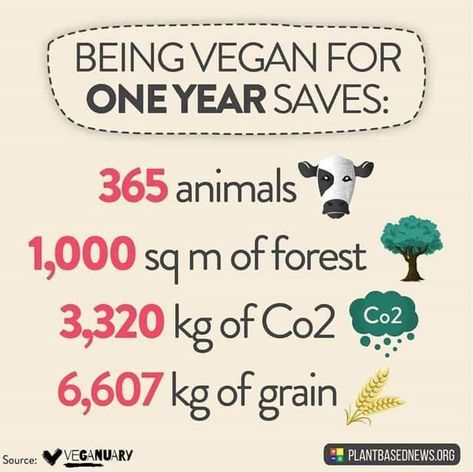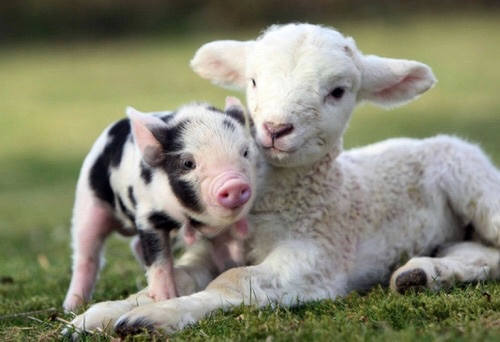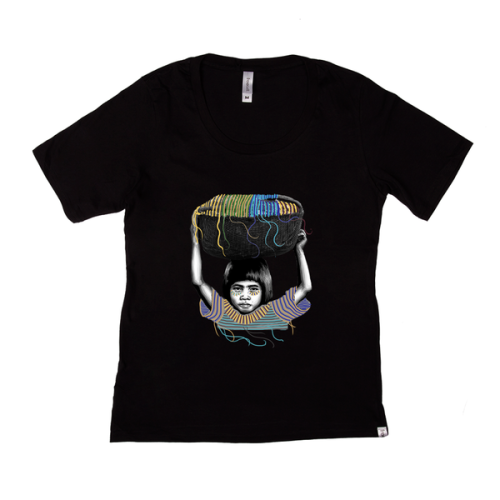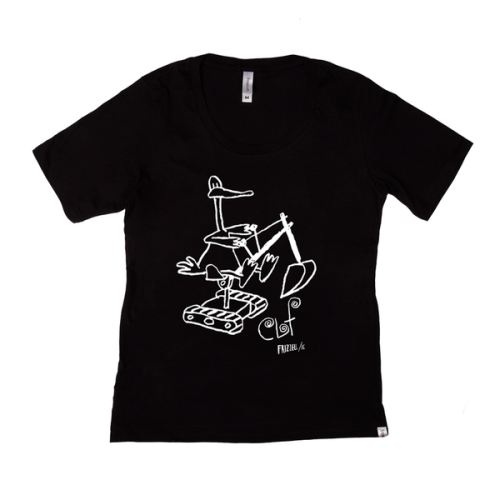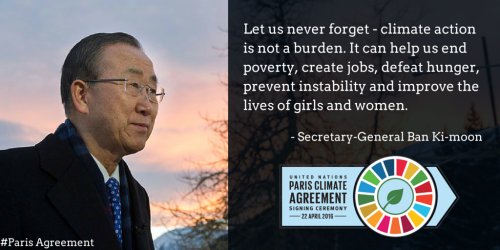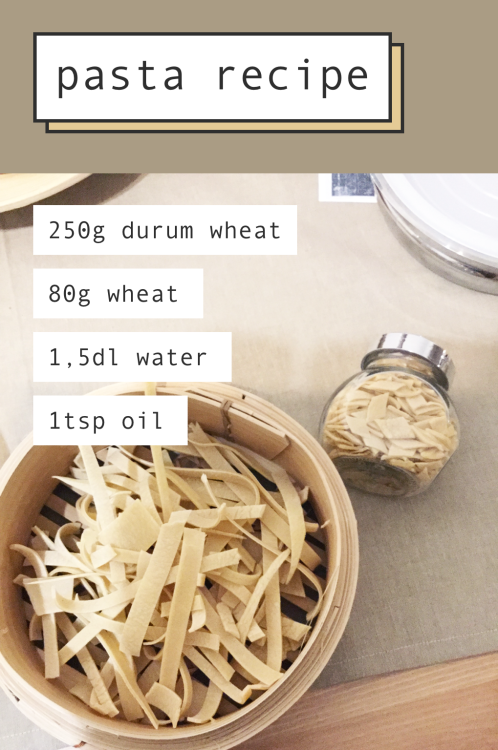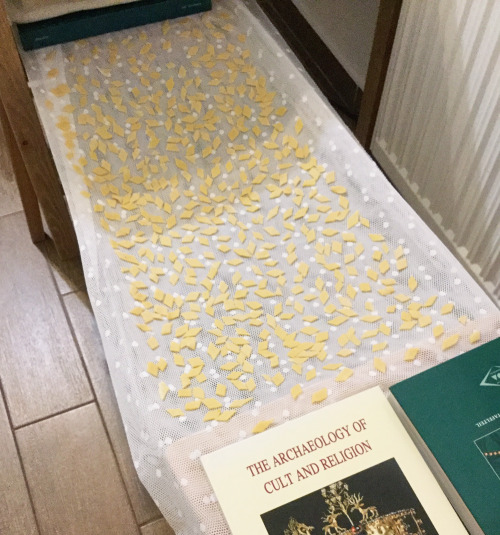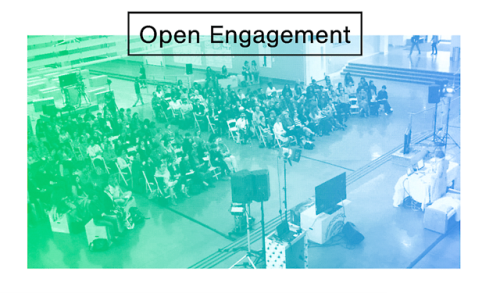#sustainability

The way we see the world shapes the way we treat it. If the planet is our mother, not an opportunity— then we will treat each other with greater respect. Thus is the challenge, to look at the world from a different perspective.
In short, veganism is doing the best you can to cause the least amount of harm. Just do your best :)
Post link
Child Labor Free Limited Edition Tees
Child Labor Free have collaborated with New Zealand artist Dick Frizzell and London based Zabou x Villanaart to design limited edition t-shirts to fundraise and establish an education and care centre for high risk children in the red light district of Kolkata.
The 100% organic cotton t-shirts are sourced from Freeset. Freeset is a fair trade business offering employment to women trapped in Kolkata’s sex trade. Proceeds from the sales of these t-shirts go on to provide support to their community and help break the cycle of child exploitation in the district.
Available to buy online at www.childlaborfree.com/site/shop
Post link
Wow! 175 Parties signed the#ParisAgreement on Climate Change last Friday. But we – and our leaders – are not off the hook. We must take climate action individually and keep pressuring our leaders and institutions to think sustainably.
Learn more here: bit.ly/23OQS4x
Post link
Congratulations to the Black Oaks Center for Sustainable Renewable Living for fully funding their Kiva Zip Loan!
Post link
May 2021 - Garden update!!
This year we started our balcony garden a bit later than usual. We decided to buy seedlings from local farmers instead of growing our own from seed. We didn’t really have time to prepare during the winter, so it was easier this way.

Thankfully some of our plants from last year survived the winter outside, so we didn’t need to buy new seedlings everywhere.
Plants that survived winter on our balcony (we had snow and minus 10 degrees sometimes, we are in the temperate zone):
- Parsley
- Arugula
- Strawberries
- Mint
- Lemongrass
- Chives
- Thyme

Seedlings we brought from local farmers:
- 4 kinds of different tomatoes (9 seedlings in total, we are pretty much hooked on tomatoes)
- Yellow Hungarian paprikas
- Chinese lantern plant/Jew’s cherry
- Patty Pan Squash
- Red Basil
- Celery
Seeds we planted this year:
- Second round arugula
- Spinach
- Sugar Peas (great snack during summer)

Now everything is small, but I’m already super excited about how the little balcony garden will turn out this year! We still have a lot of empty space though, so I’m pretty sure we are going to plant some more stuff in the future!
My ultimate homemade pasta recipe
Once per month I spend a few hours in the kitchen to create our own pasta. It’s way more delicious compared to the ones you can buy in a store. In this way I also don’t have to buy packaged pasta.
Ingredients:
250g Durum wheat
80g Wheat
1,5dl Water
1 tsp Oil
Pinch of Salt
Step by step process:
- Mix together the two different wheats + salt
- Add the water and the oil
- Then start to kneed it until it’s surface gets smooth
- Put it in a bowl or plastic bag and let it rest for 30 mins
- Then cut it (you can learn some fancy cutting and pasta making techniques on youtube here, but I usually just cut it in a very simple form)
- Find some place to dry it, pay attention to keep them separated while drying - this part can be tricky, as you can see on my images I sometime use a big cloth or just hang them up somewhere
Don’t forget to keep it dry in a container after they are ready. If you want use them just cook them in boiling water just as you would like to do it with normal pasta.
Post link
a_n Professional Development Bursary 2018
I will be travelling to New York during May thanks to a development bursary via a-n: https://www.a-n.co.uk/news/n-artist-bursaries-2018-70-artists-receive-share-65000
The residency will allow me to attend Open Engagement:
Open Engagement 2018 — SUSTAINABILITY will take place May 11–13, 2018 at the Queens Museum and a constellation of sites across New York City. This year’s conference will feature presenters including Lucy LippardandMel Chin.
Now in its 10th year – the last in its current form – OE will bring together hundreds of artists, activists, educators, students, organizations, institutions, and thinkers from every corner of the globe. This year’s program will explore the theme of SUSTAINABILITY, as well as take stock of the field of socially engaged art.
OE 2018 will feature a selection of focused trainings to provide attendees with tools for more impactful and sensitive creative work anchored in community-building and social justice, as well as opportunities for intimate discussion during our Dinner Conversation Series. In the evenings, femme-fronted, queer-inclusive nightlife organizers will host celebrations, guided by the belief that transformative acts of change are deeply indebted to these marginal spaces of collective joy.
OE is working with partners spanning New York City’s five boroughs to represent the work being done at the intersection of art and activism across the city. Current partners include: A Blade of Grass, American Folk Art Museum, Bad at Sports, Bronx Museum of Art, Bureau of General Services—Queer Division, Community Access Art Collective, Eyebeam, Fourth Arts Block, Interference Archive, International Center of Photography, Knockdown Center, Lesbian Herstory Archives, Maker Park Radio, New York City Department of Cultural Affairs, New York Hall of Science, No Longer Empty, Recess, Social Justice Tours, Studio Museum in Harlem, Swale, Decolonize This Place, Discwoman, Sylvia Rivera Law Project, The 8th Floor, and Visual AIDS.
Research Question: Why is the opportunity provided by this bursary crucial to your artistic and professional development?
It will place within a research-lead, conference-based, international environment the central tenets of my practice over the last 20 years. Namely an exploration into the politics of material values within socio-economic frameworks. I often question financial imperatives, environmental impacts and the disjuncture inherent within our ‘relationship’ between the two.
Attending the conference will offer an unprecedented access to global and local thinkers, to ‘change-agents’ and artist-lead initiatives and to key-note presentations from Lucy Lippard (Feminism, dematerialization, 'cultural amnesia as political strategy’) and Mel Chin (cross-cultural aesthetics, complexity, multi- disciplinarity).
It will also allow me to question how arts practice can encourage communities, as well as individuals, to critically review their existing ‘visual cognitive strategies’ whilst developing new methodological approaches ‘that dislodge discipline boundaries, override media conventions, and disrupt political interests’ (Sullivan, 2012), whilst also exploring work that shifts the focus from objects to relationships (Capra, 1996, p28).
You can find out more about the conference here: http://openengagement.info/queens-2018/
Post link
THE TWILIGHT OF THE ETHICAL CONSUMER
‘It might sound like we’re cut from the same cloth, but Consumer Activists of yesteryear share few similarities with our modern Ethical Consumer selves. While Consumer Activists went to great lengths to understand how products were made and sold and how corporations function, this process of knowing was not in service of choosing better products (à la the Pollan era of privatized enlightened consumption)—it was for the explicit purpose of holding corporations and government accountable. “Consumer reforms cannot be separated from corporate reforms: they are two sides of the same coin,” wrote Nader in The Consumer and Corporate Accountability, a 1973 anthology of the movement’s mid-career victories.‘
‘The most striking difference between yesterday’s consumer activist and today’s ethical consumer is the matter of responsibility. Who or what is to blame for social problems, and who has the power to solve them? Consumer Activists believed that companies selling goods and services have a responsibility to “their customers, to their workers, and to the government agencies which regulate them.” Companies have a responsibility to society. And when companies endanger us or the environment, it’s their fault, not ours as shoppers. They understood that the market must be tamed with democracy, and rules, and guardrails, or it would always exploit.
The Ethical Consumer, by contrast, somehow believes that we personally cause social problems by sending market cues that we want unethical and unsustainable products. If we follow our own beliefs to their logical conclusion, that means problems as serious as the climate crisis, racist inequality, union-busting, food deserts, and sweatshop wages are somehow the result of not shopping in the right stores. How convenient for the Fortune 500 companies that directly cause so many of these troubles.‘
Fashion Goes Green to Raise Capital
But: ‘ESG bonds and loans are only a starting point. Indicative of progress within the industry, many still fail to address pressing issues surrounding labour rights and environmental issues beyond their own operations.
“Within the social space, the real material issue is actual wages, and bonds are not going to magically solve those issues,” said Bédat. “Materiality means what is happening on your scope three emissions, materiality means what wages are your workers receiving, materiality means how many people of colour are on your board. That’s the way to move away from greenwashing or green aspirations and really fundamentally address and change how companies are operating.”’
‘Made in Bangladesh’ may soon mean your clothing is much more sustainable
‘Bangladesh is a prime spot for a mass-recycling experiment. It is ground zero for fast-fashion manufacturing thanks to its low-wage workforce. This means that a lot of cheap, low-quality clothes pass through its borders, leading to a lot of waste. (This cheap labor often comes at a high human cost: Many Bangladeshi workers face terrible working conditions; in 2013, the Rana Plaza garment factory collapsed, killing 1,134 workers.) Factories are full of clothes that were thrown out because of a manufacturing error and bolts of fabric that were ordered but never used—plus all the scraps leftover from regular production. COVID-19 has only exacerbated this problem. The pandemic has hit the fashion industry hard and many brands have cancelled orders. According to the Global Fashion Agenda, wasted fabrics and finishes are piling up at factories. The goal of the recycling project is to capture these and other waste materials, then transform them back into new clothes.’ ‘Still, sustainability experts warn that recycling is not going to save the planet if clothing consumption continues to increase, and fast-fashion brands continue churning out billions of clothes every year. In addition to recycling, consumers need to buy less and wear each item longer. And brands need to design and market clothes so they are more durable—which is diametrically opposed to how fast-fashion brands design today.’
For Brands, Is Resale Actually Worth It?
‘Every item for sale on a secondhand marketplace must be sorted, priced, photographed and described in a listing. Multi-brand resellers have giant warehouses where some of that work is automated. Few brands can hope to achieve the scale needed to do the same.
At Eileen Fisher, for example, all new items must have a price tag that also includes a bar code and information about the materials used, information that comes from various departments. Eileen Fisher Renew, the resale arm, has to figure out what older pieces are made of and set its own prices, said Cynthia Power, the secondhand division’s director.
“There are these [surprising] challenges, where when something feels like it should be easy actually isn’t at all,” Power said. “If you’ve built your company as a retail company, offering resale requires a different set of practices.”’

GTO (Greener Than Others) brand of the week: Bethany Williams.
Source: ‘BETHANY WILLIAMS IS MORE THAN A DESIGNER, SHE’S AN NGO’
‘Pairing upcycling with a quest for uniqueness and supporting charities has, over time, become the core of Williams’ label. Except now she’s selling her pieces via some of the biggest luxury retailers in the world, collaborating with sportswear giants, and setting a standard for what partnering with charitable projects could, and arguably should, look like within the fashion space. And she’s doing a lot of that work with the help of donated and recycled textiles. “We have yarns donated from different suppliers in Italy and then we just use those materials. If one store has a different colorway to another store, it’s because we’ve run out [of one particular yarn or material]."’

Source; ‘The Best Brands of 2020: Grailed’s Year in Review‘
Grailed’s Top 30 Brands of 2020

Grailed’s 15 Fastest Growing Brands of 2020

Great article on BoF: ‘How to Avoid the Greenwashing Trap’
‘H&M releases [two] ‘conscious collections’ a year and calls themselves sustainable… how about you make all your clothes sustainable (and properly disclose how they’re even sustainable). How about you pay your workers liveable wages and give them good working conditions.‘


